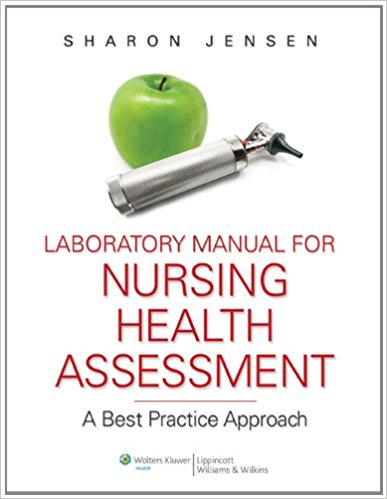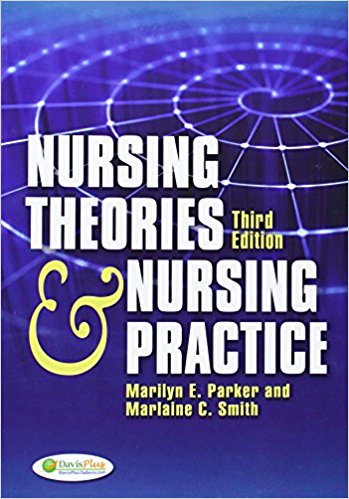Test Bank For Nursing Health Assessment A Best Practice Approach 1st edition by Jensen
Original price was: $75.00.$25.00Current price is: $25.00.
Test Bank For Nursing Care of Children Principles and Practice 3rd edition by Susan R. James is an important resource for any nurse who cares for children. It provides information on delegation, setting priorities, and making patient care as efficient and effective as possible.
The book also includes a variety of well-organized, real-world examples that illustrate how these concepts can be applied in practice. In addition, the Test Bank For Nursing Care of Children Principles and Practice 3rd edition by Susan R. James is an excellent study aid for those preparing for the NCLEX-RN exam. As such, it is an essential resource for any nurse who cares for children.
Digital item No Waiting Time Instant Download
Description
Test Bank For Nursing Health Assessment A Best Practice Approach 1st edition by Jensen
Chapter 05- Documentation and Interdisciplinary Communication
1.
The medical record serves many purposes. What are they? (Select all that apply.)
A)
Framework for medical information
B)
Means for financial reimbursement
C)
Research
D)
Care planning
E)
Information for the family
2.
A court trial is being conducted over an incident in the operating room. How would the medical record best be used in this instance?
A)
To provide a record of the nurse’s activities
B)
To provide a record of the actual events
C)
To provide a record of how the patient was harmed
D)
To provide a record of the physician’s activities
3.
Students are learning about the many uses of the medical record. One of these uses is to perform an internal audit. What is the goal of an internal audit?
A)
The evaluation of financial reimbursement
B)
The evaluation of patient nutrition
C)
The evaluation of care for continual improvement
D)
The evaluation of timely documentation of pain
4.
Why do nursing students review medical records? (Select all that apply.)
A)
To enhance clinical learning
B)
To compare nursing care provided to patients
C)
To evaluate the plan of care for a specific patient
D)
To verify that laboratory results are accurate
E)
To better understand complex clinical situations
5.
The implementation of computerized charting systems is a nationwide event. What has research shown about the use of computerized systems?
A)
Safety among patient populations decreases
B)
Pharmacy orders are electronically verified
C)
Physician notes are more secure
D)
Patient safety increases
6.
A clinical instructor is discussing with students the care provided to a patient. The instructor asks the student why it is important to make timely entries into the medical record. What would be the student’s best answer?
A)
To have up-to-date information on which to base clinical decisions
B)
To be able to verify what care has been given
C)
To communicate with other health care providers
D)
To be able to update the plan of care
7.
The Joint Commission, in 2006, developed a National Patient Safety Goal. What is a requirement of this goal?
A)
Health care agencies need to standardize their charting
B)
Health care agencies need to develop a standardized approach to hand off communications
C)
Health care agencies need to conform to Joint Commission communication templates
D)
Health care agencies need to computerize medical records
8.
One of the goals of nursing is to provide care that is safe to patients. What is the best way for nurses to realize this goal?
A)
By accurately charting patient care
B)
By continually assessing patient laboratory values
C)
By continual communication with all members of the health care team
D)
By giving patient care conferences including all members of the health care team
9.
A new graduate nurse has just started working. The new nurse asks a more experienced nurse to explain SOAP charting. What would the second nurse explain that the A in SOAP stands for?
A)
Analysis of data to identify a problem
B)
Assessment of subjective data
C)
Assessment of objective data
D)
Articulation of the plan of treatment
10.
When an agency has policies that require nurses to write focus notes, the nursing documentation can include what?
A)
Areas of personal accomplishments
C)
Social networks
B)
Areas of personal weakness
D)
Family concerns
11.
When a nurse works in a health care agency that charts by exception (CBE), he or she knows that the patient assessment is structured by what?
A)
Medical diagnoses
C)
Standardized norms
B)
Patient needs
D)
Joint Commission standards
12.
When charting by exception is used in a health care agency, the most important aspect of this method is what?
A)
Organizing new forms for the nursing staff
B)
Identifying the standards and norms for the institution
C)
Training new nurses in writing CBE notes
D)
Pulling together a group of experts to teach agency staff
13.
Nursing students are learning about different methods of charting in the clinical laboratory. What method would they learn that is a shared mental model for improving communication between and among clinicians?
A) SBAR B) CBE C) SOAP D) PIE
14.
The nursing instructor is explaining SBAR documentation to students before taking them into the clinical area. What would the instructor explain that the situation, background, and assessment are based on in SBAR charting?
A)
The patient’s background
B)
Information that the nurse obtains from the family
C)
Complete and accurate assessment data
D)
Data in old records
15.
What is the most common use of SBAR?
A)
Contacting a provider regarding a patient issue
B)
Structuring communications during handoff
C)
Delegating care to nursing assistants
D)
Expressing concern about a patient’s condition to the charge nurse
16.
A nurse has assessed that a patient’s condition is worsening. The nurse is telephoning the primary care provider and providing an SBAR report about the patient and her condition. What would be important for the nurse to document? (Select all that apply.)
A)
The time
B)
Information from the previous shift
C)
The information received
D)
Specialists to whom the patient is referred
E)
The name of the provider
17.
A nurse has been called to testify in a lawsuit brought by a patient against his employer. This institution uses charting by exception (CBE). What type of legal problems does CBE pose?
A)
The charting format is not ethical
B)
Details are often missing
C)
Subjective information is often missing
D)
It reflects poor assessment skills on the part of the nurse
18.
How does computerized documentation enhance communication? (Select all that apply.)
A)
It is more complete than handwritten charting
B)
It is legible and time dated
C)
It permits multiple simultaneous users
D)
It increases compliance
E)
It verifies telephone communication
19.
To make a legal entry into the medical record, the nurse must document what?
A)
Laboratory tests ordered
C)
Time of the assessment
B)
Attending physician
D)
Nature of the assessment
20.
HIPAA gives patients greater control over their medical records. What else does HIPAA provide?
A)
Copying of medical records
B)
Education of lay people about medical records
C)
Patient recourse if privacy protections are violated
D)
Legal use of medical records
Answer Key
1.
A, B, C, D
2.
B
3.
C
4.
A, E
5.
D
6.
A
7.
B
8.
C
9.
A
10.
D
11.
C
12.
B
13.
A
14.
C
15.
A
16.
A, C, E
17.
B
18.
B, C, D
19.
C
20.
C





Be the first to review “Test Bank For Nursing Health Assessment A Best Practice Approach 1st edition by Jensen”